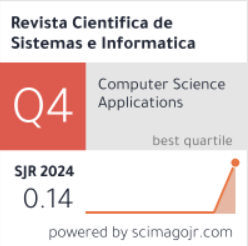Simulation of assisted entotophilic pollination process in Shanusi oil plantations to plan future production scenarios
DOI:
https://doi.org/10.51252/rcsi.v2i1.133Keywords:
dynamic, model, planning, production, systemsAbstract
Oil palm plantations require the management and control of variables that allow guaranteeing a successful harvesting process, in which we guarantee high levels of plantation effectiveness and efficiency in the use of assigned resources. We designed a simulation model of the assisted entomophilic pollination process in oil palm plantations for the projection of future production scenarios. We carried out a non-experimental study, of a descriptive purposeful type, to generate the simulation model applying the systems dynamics methodology. We work with a sample of 72 palm growers, whose plots are located in the Loreto Region - Peru, to whom we apply an instrument to know the total hectares, number of plots, area, year of sowing, hectares in production, with natural pollination. , racemes per plant, kilos per plant and percentage of inflorescence pollinated and not pollinated. The result was that we planned future production scenarios in oil palm plantations based on the simulation of the assisted entomophilic pollination process using the model built from 2019 to 2030. We conclude that through the simulation model created applying the methodology of system dynamics it is possible to predict future production scenarios in the Shanusi oil palm plantations
Downloads
References
Arévalo Solsol, P. W. (2010). Manual técnico del cultivo de palma aceitera. Ministerio de Agricultura. https://www.midagri.gob.pe/portal/download/pdf/direccionesyoficinas/dgca/Cartilla-de-difusion-Palma.pdf
Baranzelli, M. C., Boero, M. L., Córdoba, S. A., Ferreiro, G., Maubecin, C., Paiaro, V., Renny, M., Rocamundi, N., Sazatornil, F., Sosa Pivatto, M., & Soteras, F. (2018). Socios por naturaleza: una propuesta didáctica para comprender la importancia de la interacción mutualista entre las flores y sus polinizadores. Enseñanza de las Ciencias. 36(1), 181. https://doi.org/10.5565/rev/ensciencias.2239
Cantú González, J. R., Guardado García, M. del C., & Balderas Herrera, J. L. (2016). Simulación de procesos, una perspectiva en pro del desempeño operacional. Revista Iberoamericana de Producción Académica y Gestión Educativa, 3(5). https://www.pag.org.mx/index.php/PAG/article/view/567
Céspedes Reátegui, J. J. (2014). Dosis de polen y talco en polinización asistida y su efecto sobre el rendimiento de racimos en Elaeis Guineensis Jacq. palma aceitera. Pampa Hermosa – Yurimaguas [Universidad Nacional de la Amazonia Peruana]. http://repositorio.unapiquitos.edu.pe/handle/20.500.12737/3329
Climate-Data.org. (2019). Clima Pongo de Caynarachi: Temperatura, climograma y tabla climática para Pongo de Caynarachi. Climate-Data.org. https://es.climate-data.org/america-del-sur/peru/san-martin-1044/
Fontanilla, C., Rincón, V., Mesa, E., Mariño, D., Barrera, E., & Mosquera, M. (2016). Estimación del rendimiento de la mano de obra en labores de cultivo de palma de aceite: caso polinización asistida. Revista Palmas, 37(2), 21–35. https://publicaciones.fedepalma.org/index.php/palmas/article/view/11736
García Amaro, E. (2004). Modificaciones al Sistema de Clasificación Climática de Köppen. (2nd ed.). Universidad Nacional Autónoma de México.
Grande Blesa, A. (2011). Desarrollo y validación de un modelo de simulación para el complejo asistencial médico tecnológico de Navarra (CAMTNA) [Universidad Pública de Navarra]. https://hdl.handle.net/2454/4510
Indupalsa S.A. (2018). Memoria anual 2018 - Industria de palma aceitera de Loreto y San Martín S.A.
Jacome Bernal, M. A. (2015). Cuantificar la polinizacion asistida en el hibrido interespecifico o OxG palma de ceite, en la planacion Salamanca Oleaginosas S.a. Tumaco. [Universidad de Nariño]. http://sired.udenar.edu.co/434/
Torres Beltran, L. P. (2014). Caracterización del proceso de polinización asistida en palma de aceite (Elaeis Guineensis) en la empresa UNIPALMA de los Llanos S.A. [Universidad Santo Tomás]. http://hdl.handle.net/11634/23166
Published
How to Cite
Issue
Section
License
Copyright (c) 2022 Herson Zamora-Pinedo

This work is licensed under a Creative Commons Attribution 4.0 International License.
The authors retain their rights:
a. The authors retain their trademark and patent rights, as well as any process or procedure described in the article.
b. The authors retain the right to share, copy, distribute, execute and publicly communicate the article published in the Revista Científica de Sistemas e Informática (RCSI) (for example, place it in an institutional repository or publish it in a book), with an acknowledgment of its initial publication in the RCSI.
c. Authors retain the right to make a subsequent publication of their work, to use the article or any part of it (for example: a compilation of their works, notes for conferences, thesis, or for a book), provided that they indicate the source of publication (authors of the work, journal, volume, number and date).










